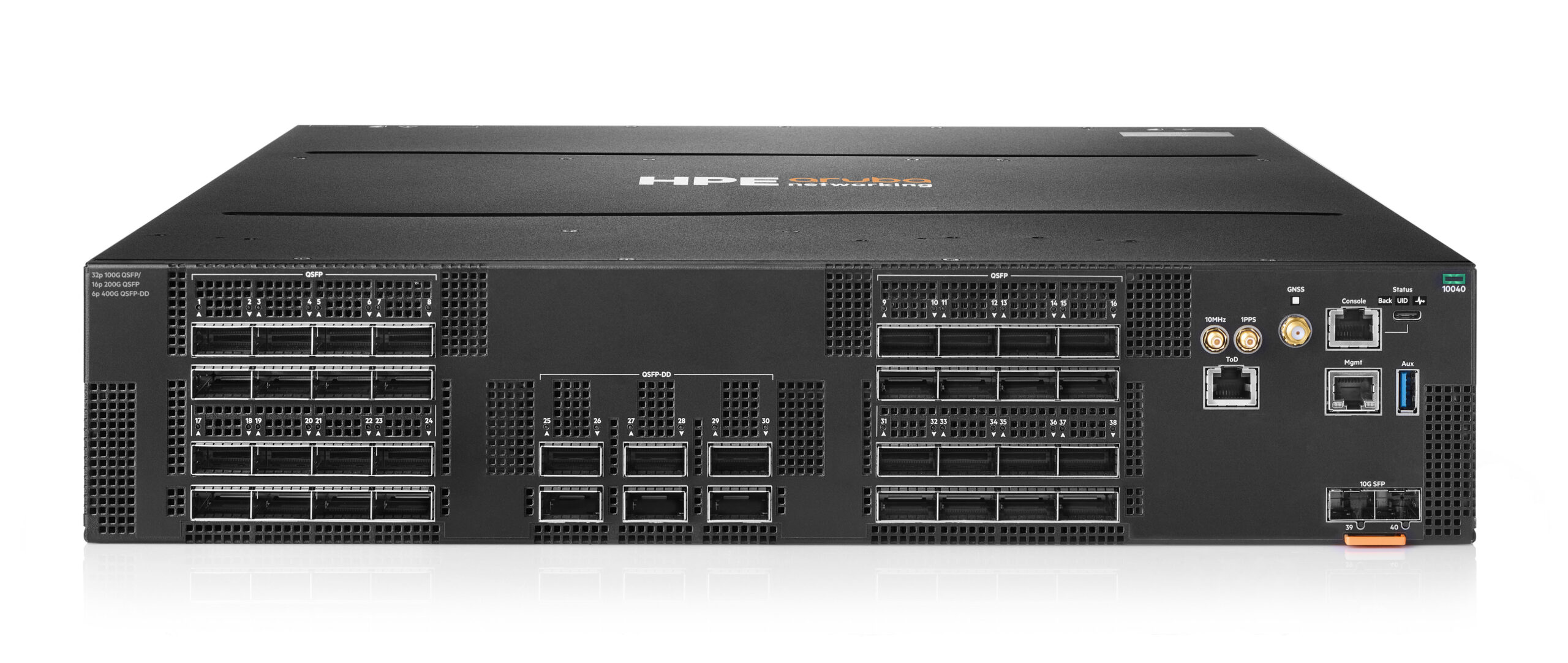
Hewlett Packard Enterprise (HPE) today expanded its portfolio of network switches to include an offering that comes with a built-in programmable data processing unit (DPU) from AMD Pensando processors, along with a set of campus switches and WiFi 7 access points.
John Gray, head of data center marketing for the Aruba Networks arm of HPE, said the latest addition to the HPE Aruba Networking CX 10K distributed services switches, also known as Layer/2/3 smart switches, doubles the scale and performance of its existing switches to enable IT teams by offload processing tasks such as the processing of security or network virtualization functions to an AMD DPU.
That latter capability is especially useful for organizations that are migrating to kernel-based virtual machines (KVMs) in place of network virtualization software provided by the VMware arm of Broadcom, he added. HPE also provides access to HPE Morpheus VM Essentials integration with HPE Aruba CX 10000 Switch to make it simpler to orchestrate virtual and physical network and security services, such as distributed firewalls, across a mix of KVM and VMware ESXi hypervisors and bare-metal servers, noted Gray.
At the same time, HPE is adding four Compass switches to the HPE Aruba Networking CX 6300M series that, in addition to being smaller than previous offerings, provide enough capacity to process data across a range of latency-sensitive applications. They also provide support for encryption along with application recognition and control capabilities.
Finally, a set of WiFi-7 access points adds a set of indoor and outdoor offerings that provide access to a network slicing capability to enable IT teams to dynamically prioritize different applications. Capabilities that are unique to the HPE Aruba Networking 760 Series Outdoor and Industrial Access Points include multi‑link operation (MLO) for channel aggregation across different bands and failover, 4096 QAM (4K QAM) modulation for higher peak data rates, and spectrum puncturing to avoid interference of the 6 GHz wireless band.
As is the case with all HPE Aruba switches and access points, the latest additions to the company’s portfolio can all be managed via an HPE Aruba Networking Central cloud service.
It’s not clear at what pace IT organizations are considering network upgrades, but the types of applications being deployed are increasingly processing and analyzing more data at the network edge. The need for increased network bandwidth to provide access to those applications is as a result steadily increasing.
The challenge then becomes determining what mix of network switches and access points needs to be deployed to ensure acceptable levels of performance.
The pace at which organizations will be upgrading networking services will, of course, vary widely. During uncertain economic times, there is a natural tendency to postpone IT infrastructure upgrades. However, at the same time, the pace at which more data-intensive applications that include artificial intelligence (AI) models run both at the network edge and in the data center is only going to continue to accelerate.
In fact, IT organizations at the very least should be planning to replace legacy switches and access points that were not designed to support these classes of next-generation applications.


